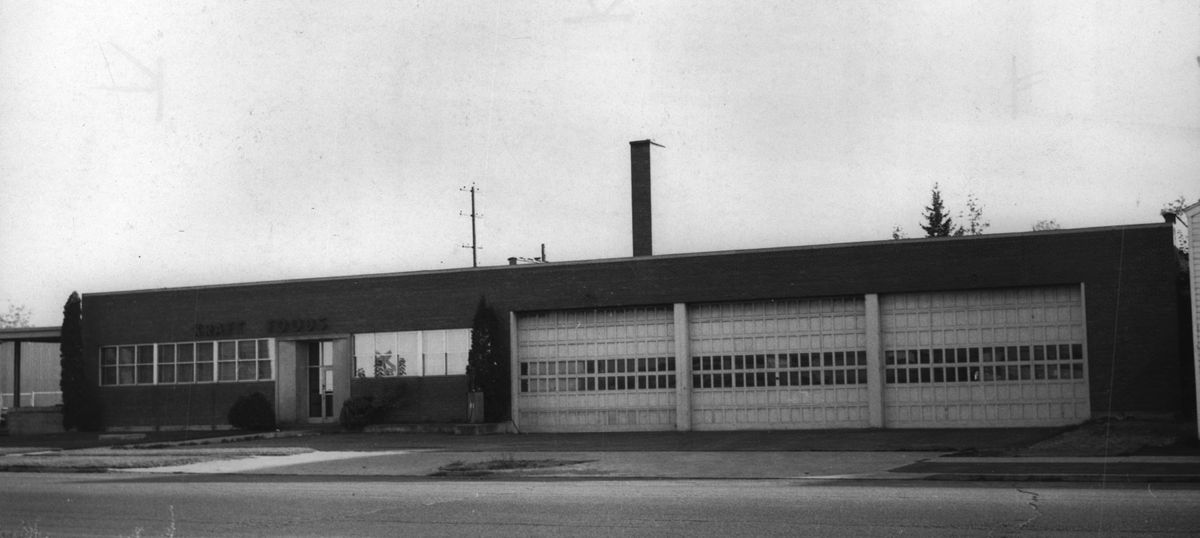Then and Now: Kraft Foods at 122 E. Montgomery

The low commercial building at 122 E. Montgomery Ave. was built for innovations in cheese and later in music.
The structure’s warehouse space and offices were first occupied by Kraft Foods company in 1949. The national company is named for founder James Lewis Kraft, born in Canada in 1874, who is most famous for developing and patenting various types of “processed cheese,” which added emulsifying agents, salt, coloring and other flavors to dairy components.
Kraft began working for a cheese company in 1902 but when the company folded suddenly, he rented a horse and wagon and began buying and delivering cheese to grocery stores. Bringing his brothers in to form the Kraft & Bros Company, he patented a process in 1916 to pasteurize cheese so it would resist spoiling. The new process meant cheese could be shipped by trains and trucks for many days with only minimal refrigeration
According to the website cheesetique.com, more than 40% of cheeses consumed in 1930 were Kraft brand.
Kraft’s shelf-stable cheeses were included in meals for the armed forces in World War I and every subsequent conflict. Most agree the processed cheese flavor was bland, but Americans loved that it melted smoothly and cost less then traditional cheeses. Kraft made many spreads, dips and powdered cheese products like those used in Kraft’s macaroni and cheese, which debuted in 1937.
J.L. Kraft was still alive when the facility on Montgomery Avenue was built in Spokane. He died in 1953.
Kraft moved out in the mid-1960s, and Merrill P. Womach bought the building for his National Music Service, which distributed playback equipment and recorded music to funeral homes throughout the country.
Womach, born in Spokane in 1927, was a gifted gospel singer who often sang at funerals and started a music service to provide music, including his own singing, for funerals.
While on a sales trip to Oregon in a private plane in 1961, Womach crashed and was severely burned but survived. His horribly scarred face became his trademark and he continued to tour with his music and sell his services, eventually installing his music setups in more than 6,000 funeral homes, hospitals and churches. The company declared bankruptcy in 1992, though Womach continued inventing new products. He died in 2014.